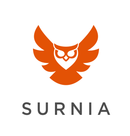Data capture and storage are topics that I’m increasingly finding myself drawn to. We’re generating data at a rate that is unlike anything ever previously experienced, and this will only continue to grow. The insights that this data can deliver are incredibly powerful, but clearly this can have both positive and negative ramifications depending on who is accessing the information and for what purpose.
We’ve been spending a lot of time thinking about this challenge and how to not only ensure that the data we’re generating in our businesses is being securely stored in a manner that is also capable of creating valuable insights, but also about the broader business opportunities that good solutions can deliver.
I’ve long been a subscriber to the view that some of the best opportunities appear when you open your mind to thinking curiously about a topic, and are prepared to follow the seemingly random pathways that journey takes you on. While we’ve been going down this path of exploring secure data storage and analytic solutions, which are vitally important in the healthcare space, I’ve also found that it’s been increasingly leading me towards the seemingly disconnected topic of geospatial data capture and storage.
At face value healthcare and geospatial mapping may not seem to have any direct correlation, but there are actually some pretty clear similarities. Both industries have traditionally been very heavily paper driven, but technology is now completely transforming the way that data is captured and the utilisation potential for that information. Without clear guidelines and appropriate storage solutions, there is great potential for harm, and the sheer amount of data generated in both industries creates the potential for valuable insights to be lost without the creation of products which crunch through that volume to deliver clear, actionable insights.
A 20 plus year career in the healthcare industry has given me plenty of ideas around how we can best utilise data in that space, but the world of geospatial data capture and usage is a new one to me. This is where those random pathways I mentioned above come in. No sooner had I started thinking along these lines, a chance conversation at a business women’s function saw this start to crystallise into a business opportunity. I met Dr Catherine Ball, current National Telstra Business Woman of the Year, 2015 (Corporate and Private), and Queensland Business Woman of the Year, and dubbed ‘Dame of Drones’ through her extensive work experience in this sector.

I’m a great believer in the power of connections born through the fantastic business womens’ networks that we have in Australia – Catriona Wallace, CEO and Founder of Flamingo and I met this way too and that’s worked out pretty well – and Catherine and I could immediately see the benefits in putting our collective heads together to explore the opportunities.
That’s seen the creation of our new consultancy business Surnia, which Catherine will represent this week at SINET61. Why Surnia? Its the genus name of the northern hawk owl, which silently gathers large data inputs from its overhead flight before swiftly processing these to deliver precise and actionable outcomes.

We’ve already got some very interesting discussions underway and are pretty excited to see what the combination of two Telstra-Award winning Catherines can deliver! Watch this space…